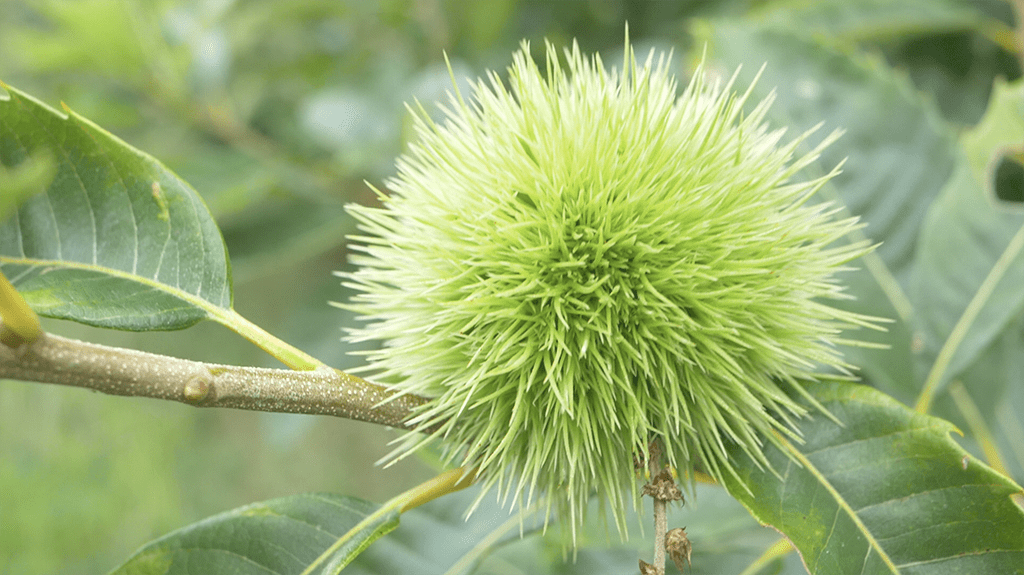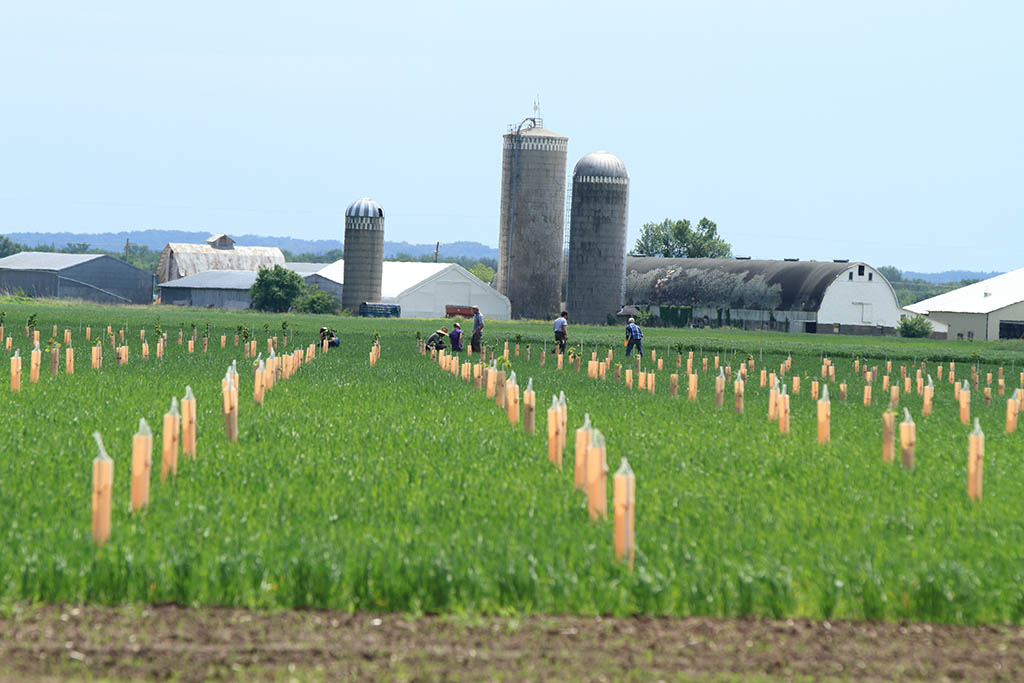
Chestnut
Castanea mollissima
Low pest pressures, dependable high yields, strong markets, and ease of maintenance make them an attractive tree crop.
DRAINAGE: Well-drained acidic soils
LIGHT: Full sun
ZONES: 5b–9 (some cultivars may be hardy to zone 4b)
SPACING: Initial spacing 20 x 20 ft, thinned to 40 x 40 ft as the trees grow
YEARS TO PARTIAL/FULL BEARING: 12–15
HARVEST SEASON: September–October
Opportunities
Chestnuts (Castanea spp.) are grown profitably for fresh markets across the Midwest but markets for processed nut products are largely Chinese-grown imports (Castanea mollissima).
Challenges
The American chestnut (Castaneda dentata) was once a major timber species in the eastern US and a valuable source of food for both people and livestock. Unfortunately, the imported chestnut blight has all but wiped them out. The blight-resistant Chinese chestnut (Castanea mollissima) is now the primary species grown east of the Rockies though some commercial hybrids utilize Japanese (C. crenata) and European (C. Saliva) chestnut genetics.
Management
Chinese chestnuts require at least one other cultivar for cross-pollination. Plant initially at a higher density to increase yield early in the life of your orchard, and then thin out under performing trees when they become crowded.
Our Research
The Tree Crop Improvement Team is working to breed consistently high-yielding cultivars from seedling populations on farms across the Midwest. We are using aerial imagery to identify desirable cropping traits from large breeding populations, such as density of nuts within the canopy, which enables the rapid identification of new varieties. This allows us to select parents to include in a seed orchard, which will supply a new generation of farmers with improved seedlings.



RESOURCE
Overcoming Bottlenecks in the Eastern US Chestnut Industry
We’ve talked with experts across the value chain to find out what the top ten bottlenecks for the Eastern U.S. chestnut industry are and how to overcome them. Download this free report to learn more and get involved.


Establishing Asparagus Between Chestnuts
Listen to Mark Shepard discuss how to establish Asparagus between Chestnuts with alley crops.


One-On-One Support for Farm Planning
Technical Service Program
Get help planning your perennial farm system. Our Technical Service Program is here to guide you through the process of planning, funding, and planting trees on your farm.

Looking For Plants?
Canopy’s Nursery offers plant material in your region. Find chestnut, walnut, pecan, hazelnut, heartnut, persimmon, pawpaw, black currant, and elderberry for order in their online store. Not only does Canopy increase the availability of high-quality plant material in the region, it also donates part of its proceeds to Savanna Institute’s nonprofit research and education mission.

